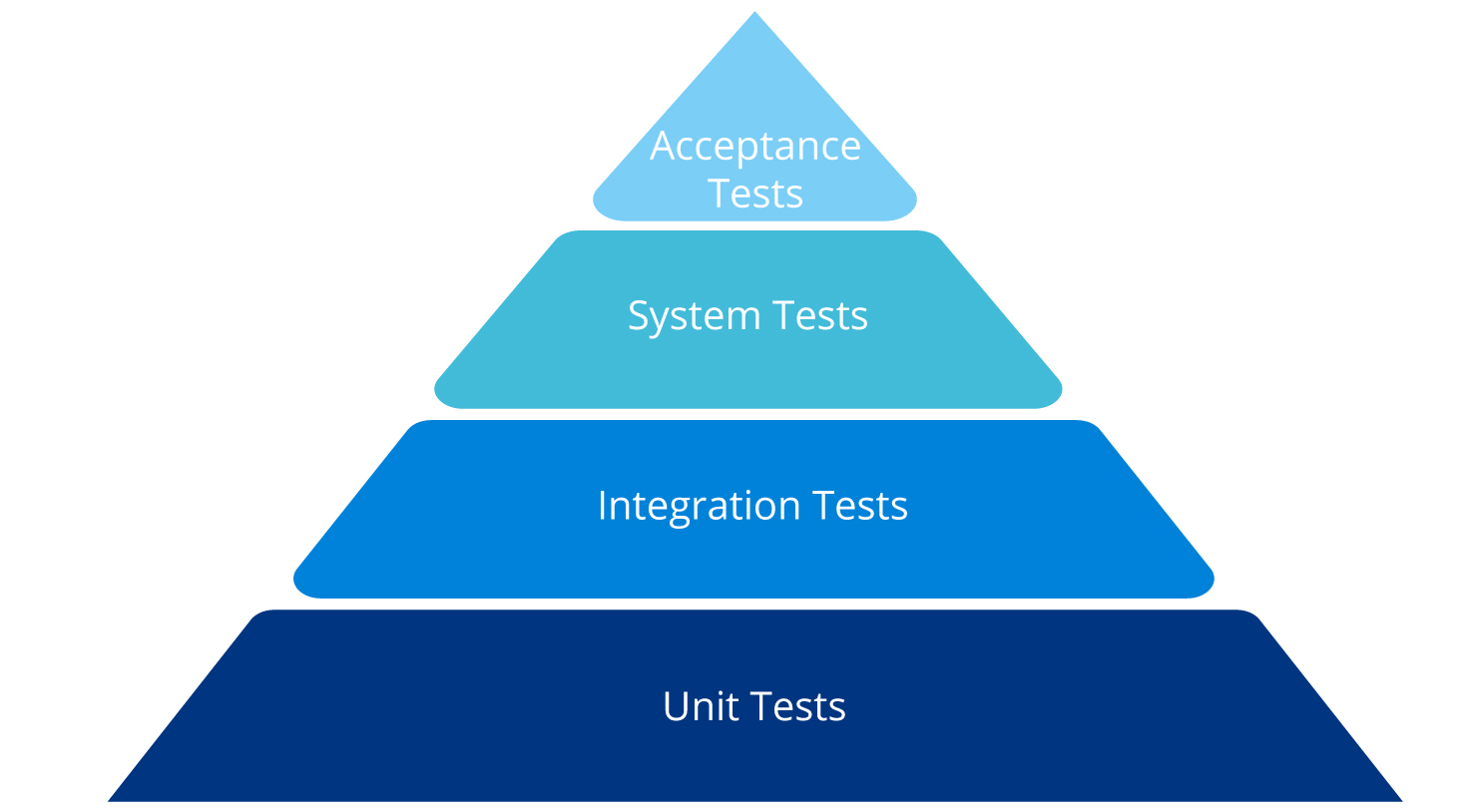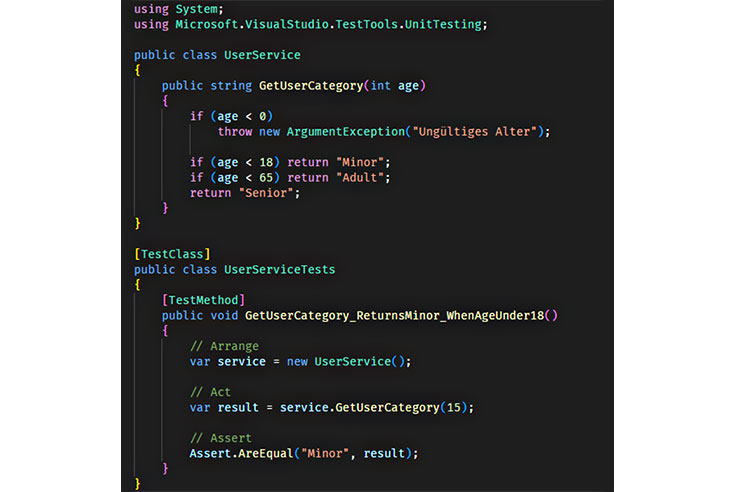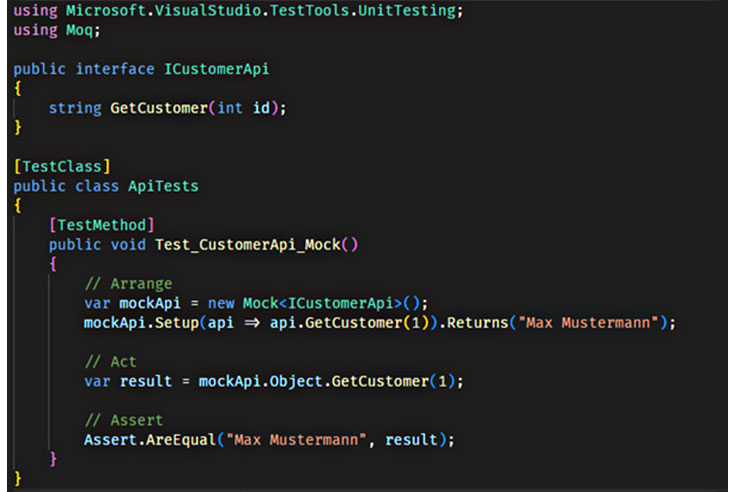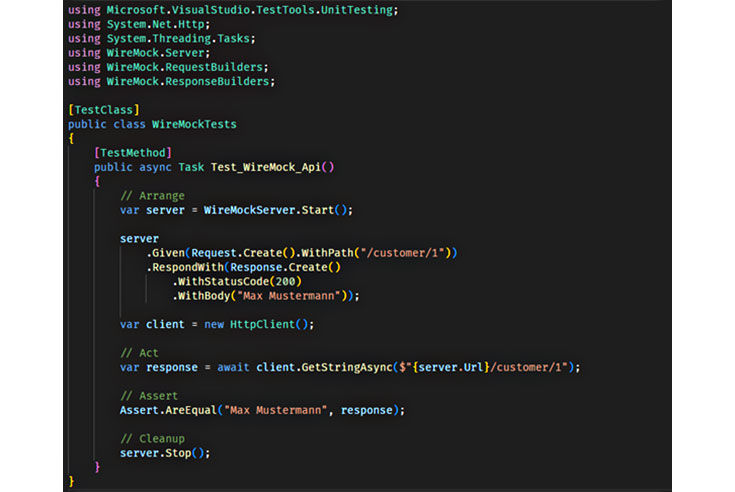
Software Test Strategy: Methods & Levels at a Glance
From Unit Tests to API Mocking
A small error in a stock trading app can cost millions - as was the case with Knight Capital in 2012. As software complexity increases, strong testing strategies are essential to avoid crashes, customer loss and reputational damage. Testing protects against costly mishaps.
Software Testing Strategy Explained: Purpose, Benefits and Impact
Software testing strategies are planned ways to test the quality of your software. They include methods for finding errors, levels from isolated parts to the entire system and best practices for efficient implementation. These approaches help to minimize risks and comply with standards such as ISTQB. You save time and money by detecting problems early.
In this article, we take a look at test types at a glance, dive into snapshot testing and explain API mocking. We cover software testing strategies, from basics to practical tips. How to save time, reduce costs and build reliable software. Development teams benefit from fewer bugs and faster releases.
Software Test Strategy Basics: Planning & Procedure
Good test strategies form the foundation of your development. They ensure that software runs reliably. Without them, errors end up in production, which is expensive. Think about tests as early as the planning phase and integrate them directly into your CI/CD pipelines. This way, everything runs automatically and efficiently.
Software Test Strategy: Definition and Objectives
A test strategy is a plan that describes how you test. It comprises the planning, execution and evaluation phases. The aim is to find errors, reduce risks and meet quality standards. In agile teams, you adapt the strategy to sprints. This allows you to iterate faster and deliver better results.
Goals range from covering all functions to compliance with regulations. Use ISTQB as a guide - it helps with the structure. Tip: Adapt your test strategy to agile methods. Define clear goals per sprint to measure progress. This turns testing into a team process.
Core Components of a Successful Software Testing Strategy
Every strong strategy has a clear scope, resources and success metrics. Scope defines what is tested - from core functions to edge cases. Resources include tools, teams and time. Metrics such as test coverage measure success.
Link tests with requirements using traceability matrices. This ensures that nothing is overlooked. Matrices help to link requirements with tests and close gaps. This is how you increase coverage.
Test Levels of the Software Test Strategy: From Unit to System
Tests build on each other like a pyramid. At the bottom are unit tests for small parts. At the top is system testing for the whole. These levels are linked in your software test strategy. Allocate resources correctly - more on unit tests, less on system tests. This saves effort.

Unit Tests: The Basis of Every Test Strategy
Unit tests check individual methods or classes in isolation from each other. They form the basis of a solid testing strategy as they detect errors early on before code is executed in more complex scenarios. A good practice is to aim for around 80% code coverage - not as a rigid target, but as a guide to ensure that the most important paths and logics are checked.
A proven approach is Test-Driven Development (TDD), in which tests are written before the actual implementation. In this way, you are forced to think through the requirements precisely before the code is created. At the same time, the tests serve as a safety net, as they provide immediate feedback on whether the implementation meets expectations.
It is also particularly important to consider edge cases. Unit tests should not only cover standard cases, but also special cases such as empty inputs, zero values, negative numbers or limit values. It is precisely at these points that errors often occur in practice, and those who consistently test these scenarios significantly reduce the risk of unexpected crashes.
Another advantage of unit tests is their speed. They can be executed in fractions of a second and therefore provide immediate feedback. They should therefore be started as often as possible - preferably after every code change or at least several times a day. In modern CI/CD pipelines, it is common for unit tests to run automatically, thus ensuring that errors are detected immediately before they reach the next development stage.

Integration Tests: Testing Realistic Scenarios
Integration tests check the interaction of several components of an application under conditions that are as realistic as possible. In contrast to unit tests, which test individual methods or classes in isolation, integration tests include interaction with external dependencies such as databases, APIs or file systems. They help to detect errors that can arise due to incorrect configurations, interface problems or the interaction of several modules. Typically, in-memory databases or special test environments are used to simulate real processes without affecting the production systems.

System Tests: An Overview of the Entire Application
While unit and integration tests check individual components or their interaction, system tests focus on the entire application. The aim is to validate the behavior of the software under conditions that are as realistic as possible - including databases, interfaces, user interface and infrastructure. At this level, it becomes apparent whether all components work together and the end product functions as desired. End-to-end tests are typically used for this, for example with frameworks such as Selenium or Cypress, which simulate real user actions. System tests are more complex to set up and take longer, but offer a decisive advantage: they uncover errors that cannot be detected in smaller tests and only occur when the entire software interacts.
Acceptance Tests: Testing From the User’s Perspective
Acceptance tests are the last step before software goes live. Here, the focus is no longer on the code or the technical architecture, but on the question of whether the application meets the business requirements and user expectations. In many projects, specialist departments or customers carry out these tests themselves, for example in the form of user acceptance tests (UAT) or as acceptance by the product owner in the scrum process. Real scenarios are run through to ensure that the software not only works technically, but also delivers the intended business value. Acceptance tests therefore close the gap between development and practice and give the final go-ahead for the use of the software.
Snapshot Testing: Ensuring Consistency of UI and APIs
Snapshot tests play a special role between unit tests and integration tests. They are particularly suitable if you want to check UI components, API responses or complex objects whose structure and output should not constantly change. Instead of checking each individual property manually, the entire output is saved once ("snapshot") and automatically compared with the current output during subsequent test runs. This allows unintentional changes to be detected quickly.
In the test pyramid, snapshot tests are in the middle range: They go beyond pure unit tests because they validate not just a single method, but the behavior of entire components. At the same time, they are less time-consuming than full end-to-end tests as they focus on the state of the output. Snapshot tests therefore offer an efficient supplement to ensure the consistency of interfaces and interfaces.

API Mocking in the Software Testing Strategy: Wiremock vs. Classic Mocking
In modern architectures such as microservices environments or external interfaces, API mocking plays a crucial role. It allows you to simulate APIs without the real remote peer having to be available.
Classic mocking in .NET: Fast tests with little effort
In classic API mocking, method calls are replaced by mock objects. This is suitable for quick, simple tests - but it remains at interface level.

Advantages of classic mocking
- High speed: As classic mocking runs directly in memory, there are no network calls or complex dependencies. Tests can be executed in fractions of a second and therefore provide immediate feedback - ideal for short development cycles and TDD (Test-Driven Development).
- Lightweight: Mocks can be set up with just a few lines of code, whether with frameworks such as Moq, NSubstitute or using your own fake implementations. This means that the tests are very easy to maintain and can also be quickly integrated by smaller teams.
- Ideal for unit tests: Classic mocking is perfect for hiding dependencies on databases, external services or APIs. This allows you to test a single method or class in isolation without external systems influencing the result. This reduces complexity and makes the tests more stable.
Disadvantages of classic mocking
- No realistic behavior at HTTP level: Classic mocks only simulate method calls or object returns, but not the actual behavior of an HTTP interface. Aspects such as network latency, headers, status codes or unexpected error states are therefore not realistically mapped. Mocks are therefore often not sufficient for tests that are intended to check the interaction of several systems.
When classic mocking makes sense in the software test strategy
Classic mocking is primarily used in unit tests, as it works quickly, efficiently and in isolation. However, as soon as the interaction of several components or communication via interfaces is to be tested, it makes sense to use integration tests or tools such as WireMock. This creates a balanced test strategy: fast unit tests with mocks for the basis, supplemented by realistic integration tests.
WireMock.NET: Realistic API simulation for integration tests
With WireMock.NET you can simulate a fully-fledged HTTP server. This allows you to realistically simulate REST APIs, including headers, status codes and request/response structures.

Advantages of WireMock.NET
- Realistic tests at HTTP level: WireMock can be used to simulate complete HTTP interactions - including requests, responses, headers and status codes. This makes the tests much more realistic because they replicate the behavior of real services. This is particularly helpful if external interfaces are not yet available during development or their use incurs costs.
- Perfect for integration and end-to-end tests: WireMock is ideal for replacing services in integration tests and system tests. Developers can check whether their application communicates correctly with an API without being dependent on the availability or stability of the real systems. Even complex scenarios - such as time delays, error codes or dynamic responses - can be simulated.
Disadvantages of WireMock.NET
- Higher resource requirements: As WireMock starts its own HTTP server, the tests consume more system resources than pure unit tests with simple mocks. This can lead to longer build times for very large test suites.
- Slower than classic mocking: While classic mocking works directly in memory, WireMock simulates complete network requests. This additional abstraction naturally makes the tests somewhat slower. Unit tests with mocks are therefore often better suited for fast feedback cycles in TDD.
When WireMock is the better choice in the software testing strategy
WireMock should primarily be used in integration tests and system tests. This is where it shows its strength by realistically simulating the behavior of external interfaces without the real systems having to be available. For pure unit tests, on the other hand, WireMock is usually oversized - classic mocks or fakes are the better choice here.
Conclusion: Using a Software Testing Strategy Effectively
Software test strategies protect your projects from errors. From unit to system level, methods such as snapshot testing and API mocking cover everything. Test types balance the functional and non-functional, automation saves time.
Take with you: Mix layers for depth, use mocks for isolation and iterate based on data. This leads to robust software. Try out a new practice - e.g. snapshot testing in your next project. This will increase quality and gain confidence.
Frequently Asked Questions About Software Testing Strategy
-
What is a software testing strategy?
What is a software testing strategy?
A plan that describes the methods, levels and objectives of testing - from unit to system tests.
-
What is the difference between unit and integration tests?
What is the difference between unit and integration tests?
Unit tests test individual methods in isolation, while integration tests test the interaction of several components.
-
When do I use snapshot tests?
When do I use snapshot tests?
For UI components or API responses, if structure and consistency are to be ensured.
-
What is WireMock.NET suitable for?
What is WireMock.NET suitable for?
For realistic simulation of HTTP interfaces in integration tests.
Written by

Peter Chojecki is an IT manager specializing in software development and cloud-based portal solutions. With a passion for modern architecture concepts, DevOps and scalable cloud technologies, he designs future-proof platforms that combine user-friendliness and technical excellence. His focus is on the further development of digital ecosystems in which efficiency, security and innovation go hand in hand.
